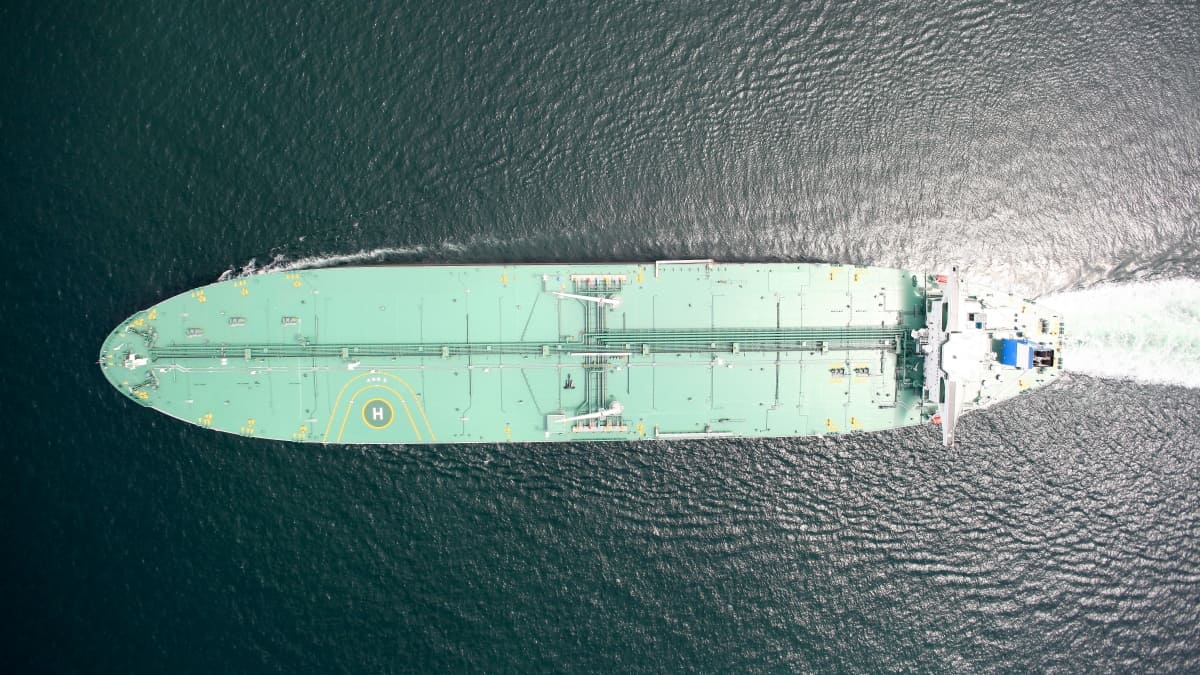If your business earns so little you can still afford to pay staff but not your lenders, that’s bad. If you can’t even pay your staff without losing money, that’s really bad. Rates for larger tankers on some major trade routes just went from bad to really bad.
There are two flavors of “breakeven”: operating-expense (opex) breakeven, which includes the cost of crew, stores, spares, management fees and insurance, and all-in cash breakeven, which also includes debt payments and interest costs.
The big red flag is when rates fall below the first of the two: opex. It’s waving.
Key route below opex
“VLCC [very large crude carrier] rates crashed 27% yesterday to average $12,400 per day,” wrote Mørkedal on Thursday. “Earnings on the Middle East Gulf [MEG]-China route fell to just $5,700 per day, apparently below operating costs.”
It got even worse on Thursday. Brokerage Howe Robinson Partners reported that MEG-China VLCC rates were down to just $5,048 per day.
“Most owners are facing opex levels presently,” said the analyst team at Fearnleys. “It’s really just a numbers game at this point, with about one of three [MEG] cargoes lost over the last three months versus the same period last year.”
Breakevens differ from company to company, depending on time-charter coverage and, in case of all-in numbers, debt levels.
Jefferies analyst Randy Giveans puts the ballpark opex for a VLCC at $8,000-$10,000 per day and all-in breakeven at roughly $25,000 per day. Clarksons Platou Securities analyst Frode Mørkedal puts opex at $7,000-$9,000 per day.
Normal bottom?
Giveans remains optimistic. He estimates that the global VLCC rate average is $16,000 per day, “still double opex. ” He pointed out that “there will always be rate differentials between routes.”
In response to questions from FreightWaves, he attributed very weak rates in the lanes such as MEG-Asia to “a massive surplus of tonnage in the Middle East as OPEC exports remain muted; inventory destocking, which is causing importing nations to reduce demand for new cargoes; low fuel prices, which are incentivizing faster speeds; and the clearing up of port congestion in China.
“VLCC rates bottomed in August-September in 18 of the past 20 years, so this is normal. We expect rates to recover in the coming weeks and months,” said Giveans.
Floating-storage destocking just beginning
Evercore ISI analyst Jon Chappell is decidedly more bearish. “This is the destocking pain we expected and it’s likely only in the early innings,” he told FreightWaves.
Indeed, there’s a lot of crude oil still on the ocean. Clarksons estimated on Wednesday that there were still 90 VLCCs in floating storage, unchanged week-on-week, with 53 VLCCs tied up in port congestion, down from 61 the week before.
Chappell continued, “Calling daily and weekly [rate] moves is a fool’s errand, but I’d say rates are likely to remain well below year-ago levels, likely into next year.
“Even ever-bullish management teams are admitting there may not be the typical seasonal spike this winter,” he noted. “There is just too much oil sloshing around and demand is still depressed.
“There will probably be volatility in the coming months, and I’m sure we’ll see days and weeks above cash breakeven,” Chappell continued. “Even in a muted winter, I think you’re likely to see rates above breakeven for most of the fourth quarter, just not as high as in recent winters until the inventory glut is cleared.”
Two scenarios
According to Fearnleys, “Two scenarios could unfold in the coming months. Our base case is that oil demand recovers along the lines of what the agencies are predicting — from 83 million barrels per day [b/d] in the second quarter to 97 million b/d in the fourth quarter. This should trigger growing volumes closer to year-end and into 2021 from the MEG, with a corresponding boost in rates.”
Scenario two is not pretty. “If oil demand underperforms expectations, we could see another round of floating storage as onshore inventories remain high. A short period of elevated rates would then be followed by a longer period of weaker rates,” warned Fearnleys, adding, “In terms of an equity story, we would obviously prefer some more short-term pain [i.e., Scenario one].”
Tanker stocks keeping sliding
As for the equity story Fearnleys referred to, its plot has taken a turn for the worse. U.S.-listed equities have been on a painful downward slide.
Year-to-date, the stock price of VLCC owner Euronav (NYSE: EURN) is down 33%, DHT (NYSE: DHT) is down 38%, Frontline (NYSE: FRO) 43% and International Seaways (NYSE: INSW) 47%.
Among the top non-VLCC names, whether crude and/or products, Nordic American Tankers (NYSE: NAT) — by far the best performer — is down 23%, Teekay Tankers (NYSE: TNK) is down 54%, Diamond S (NYSE: DSSI) 56% and Scorpio Tankers (NYSE: STNG) — by far the worst performer — is down 73% year-to-date. Click for more FreightWaves/American Shipper articles by Greg Miller
MORE ON TANKERS: Supertanker double-whammy: less volume, shorter hauls: see story here. How are tanker owners coping with the floating-storage hangover? See story here.Tanker rate puzzle gets even harder to solve: see story here.











Christopher Charles
Do you think Industrial Engineering is the most close discipline to business and economic analysis and scientific management?
Jon Twiford
Greg,
Scorpio Tankers is not a crude or dirty products tanker company. It trades products.
Slave l Lego
What’s the current Supertanker spot rates want to know about it.